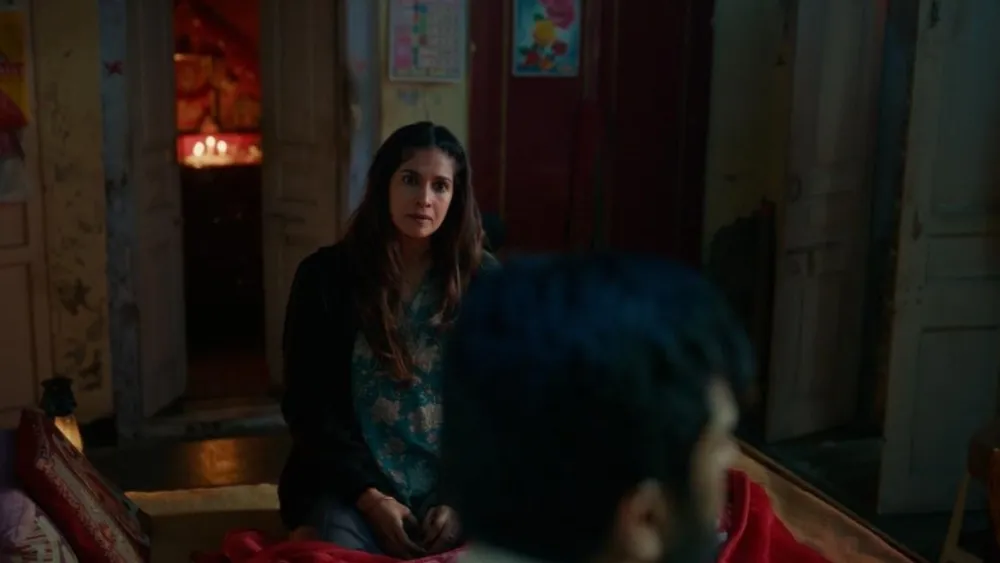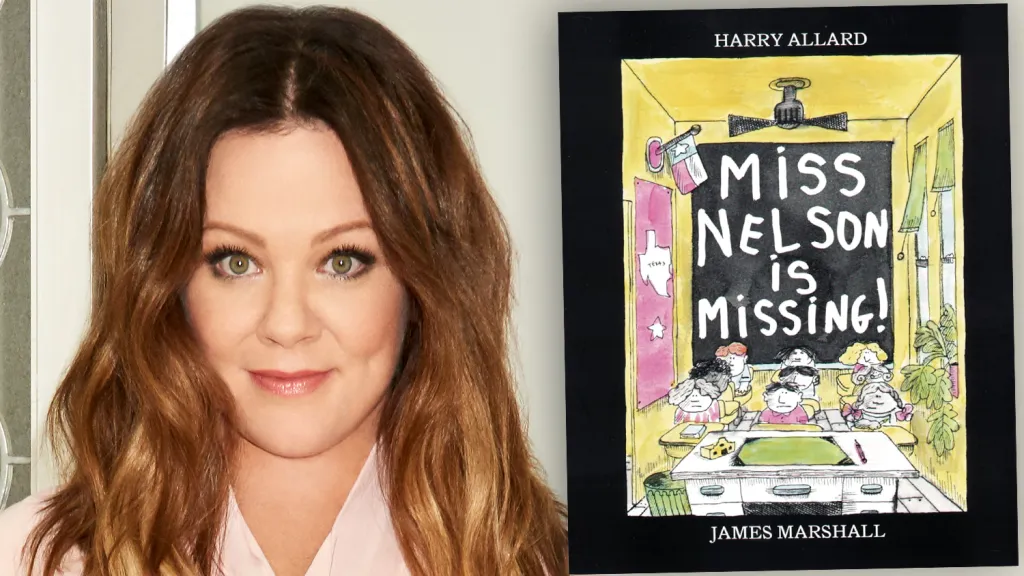Why EA is razing Battlefield to its foundations in order to build something explosively new with Battlefield 6: “[I] felt an obligation to create one of the best Battlefields the world has ever seen”
![Why EA is razing Battlefield to its foundations in order to build something explosively new with Battlefield 6: [I] felt an obligation to create one of the best Battlefields the world has ever seen](https://d2731bbzmt3wpb.cloudfront.net/news/image/us-west-2:25d97050-7aa7-43a6-a623-8fb02e6af97e/20250924/45bf1a2b537742a0a539b6310372a494.jpg)
Rebecka Coutaz joined DICE in November 2021, just two weeks after the launch of Battlefield 2042. “It’s crazy, when you come in like that, as the new GM of a studio, and you haven’t been on the journey of the previous game,” she says. “It’s probably the hardest thing I’ve done in my career, for sure – but a joy as well.” Such a situation would be challenging no matter what the studio, no matter what the game. But by 2021, 2042’s journey had been anything but smooth.
At launch, the game was greeted by the worst reviews in series history, a precipitous dropoff from its immediate predecessors. It was a sentiment echoed by the players: at one point 2042’s Steam user reviews were among the ten worst on the entire platform, and within two months of release its player numbers had dropped below that of the already three-year-old Battlefield V.
“It was a difficult time,” Coutaz says. “We had a lot of expectations from the community and the players who have been with us for decades. So we owed some things to them – and, of course, to our teams as well.” Why the teams? “They were disappointed on Battlefield 2042, too. And, across all the studios, they did not want to allow this to happen again.”
Damage Report
One of the challenges that faced Coutaz was rescuing the game’s reputation. After seven seasons of DLC, and much tweaking, “the game is in a completely different state than when we released it,” she says proudly. “We still have a lot of players playing.” (The game has also clawed back its Steam rating to 48 per cent positive, while its average player count remains just behind that of BFV.) The importance of the mission to save 2042, though, was soon eclipsed by the question of where Battlefield would go next.
It’s not entirely clear at what point the development of Battlefield 6 began – “we never share the length [of time] that we have been working on a game,” Coutaz says when we ask. “But what I can say is, I was not the only one who came on board at that time.”
She’s talking about Vince Zampella, the COD co-creator and Respawn chief who was appointed as the overall head of Battlefield weeks after 2042’s launch, and SVP Byron Beede, a former Destiny and COD exec at Activision who moved over earlier that year. It’s worth noting that, around the same time, EA hired Halo co-creator Marcus Lehto to lead Ridgeline, a new studio working on Battlefield’s singleplayer campaign; he departed early in 2024 and the studio was closed shortly afterwards – a development Coutaz is not willing to comment on.
These personnel changes are indicative of just how much EA is putting behind the new Battlefield. On a recent earnings call, CEO Andrew Wilson said EA was going “all-in as a company” on the game, and that more had been invested in it “than any Battlefield product before it”. In July, Ars Technica reported that the projected budget was “well north of” $400 million, which would put it among the most expensive game productions of all time.
Naturally, when we ask Coutaz about the scale of the project, she is tight-lipped: “I cannot share any numbers except the fact that we are four studios. You can imagine.” These four are Battlefield creator DICE, in Stockholm; its LA sibling, rebranded as Ripple Effect Studios; veteran UK studio Criterion; and Motive, which before its remake of Dead Space collaborated with the other teams on Star Wars Battlefront II.
The four are now united under the single, continent-spanning banner of Battlefield Studios. “I spent a decade at Ubisoft before joining EA,” Coutaz says. “There, many studios work on each brand, in a co-development system, and I would say that that is what we’re doing on Battlefield [Studios] as well.”
It’s not clear where each studio’s individual focus is directed, but together they are developing BF6 as a game of many parts. As well as PvP multiplayer – the only aspect that EA is willing to discuss in-depth for this feature – there’s a vastly expanded version of 2042’s Portal user-creation tools, a singleplayer campaign, and a battle royale mode. At the reveal event, Beede said that the latter represents “a brand-new experience for Battlefield.” Given his involvement in COD Warzone, and Zampella’s in Apex Legends, its inclusion isn’t all that surprising.
It’s hard to judge the overall package at this point, of course, but Coutaz emphasises that everything is pushing in a single direction. “When Byron and Vince came on board, they had a very clear vision of what they wanted to do with the franchise,” she says. This vision seems to involve digging back into Battlefield’s history, as a way to correct course after the missteps of 2042. As for her own personal objective, Coutaz tells us that since joining up in 2021, she has “felt an obligation to create one of the best Battlefields the world has ever seen. I owe that to the community and to the teams. That is my drive. That’s why I’m here.”
Fresh Perspectives
For all the newcomers to Battlefield’s leadership – and the departure of many of those involved in the early days – the BF6 team does have at least one link back to the classic that is Battlefield 1942, released a quarter of a century ago. Then a programmer, Christian Grass is now VP and general manager of Ripple Effect. He has been involved in BF6 since its inception.
“The first thing we thought about was, ‘What’s the era? What’s going to be the tone, and the feature set?'” Grass says. “And we very quickly rallied around this idea of going back to modern times. We’d done historical, we’d done near-future. It had been more than a decade [since BF4, the previous modern-day instalment], so now we wanted to go back to that.”
No wonder, given the size of the audience commanded by military games set in the present day (or, in BF6’s case, close to it – 2027). The likes of Counter-Strike 2, Rainbow Six Siege and Delta Force roost in the upper echelons of Steam’s most-played chart, but the elephant in the room is COD, its dominance having been established with the pivot of 2007’s Modern Warfare. DICE would follow it with 2011’s Battlefield 3, a game that sold 8m copies in its first month.
“Other settings have worked really well for us, like World War One,” Grass says. “Who would have known you could build such a successful game set in that era? But the modern era comes with familiarity. It feels more real. People know the hardware, the vehicles.” Of course, there’s a darker side to that familiarity, too.
Watching BF6’s reveal, it’s a little uncomfortable to hear Motive’s Philippe Ducharme pronounce that “the world is on the brink of war”. The singleplayer trailer features a monologue about the collapse of “alliances that have held since the end of World War Two”, while the event’s climactic teaser ends on a shot of fire rippling across what appear to be the hills of Los Angeles. It’s painfully close to reality.
You could interpret all of this as a sign. Perhaps the Battlefield teams just have their fingers on the pulse of geopolitics and BF6 is a well-timed work of speculative fiction. But whenever we raise this, our interviewees point out that the game has been in development for many years, and that any likenesses are purely coincidental.
“We are making an entertainment product, right?” Grass concludes. “Of course, we’ve drawn inspiration from history and the real world, but at the end of the day, it’s all about entertainment. We are focused on making sure that it’s fun, that it looks great, it feels great. Those are the things we care about.”
Soldiers advance in the rumbling shadow of a tank, using the vehicle’s bulk as a shield. Other troops cling to the tank’s sides and rear, apparently unbothered by the explosions that crumple the hull. It’s one focal point in the wider chaos – shrapnel flashing across the open streets, a rival tank ploughing through a building – a chaos that stretches beyond the current area of operations and into a skybox that periodically fills with fire and smoke trails.
This large-scale spectacle is thrilling, but within it, smaller, emergent stories can bubble up. We spend a couple of minutes locked in a tense sniper battle, taking turns to peek over cover and fire a quick shot – but the rounds are powerful enough to peel away concrete, turning it into a kind of masonry strip poker.
At the outset of one of our first matches, we follow another player to a helicopter parked at HQ. As they clamber into the cockpit, we take the gunner’s seat, and wait for takeoff. And wait. We imagine the pilot checking the manual, trying to figure out the controls. It’s only after we take our leave, hoping to catch up to our compatriots already speeding off into the fray, that the helicopter roars into life. Chasing impotently behind, hammering the ping button to try to catch a ride, we have a front-row seat for the chopper’s glorious dive over the nearby cliff edge. And for the explosion that follows.
The Battlefield Factor
These are surely what Thomas Andersson means when he talks about “only-in-Battlefield moments”. It’s a phrase he first deploys as he explains why, despite the ambitions of BF6, and the infusion of talent associated with its competitors, the creative director isn’t looking beyond the series’ own history for inspiration.
“For me, there’s no other game like Battlefield,” he says. “So it doesn’t help to look at another game and say, ‘Well, this works there’ – OK, but they don’t have these five things to consider. From my perspective, when we’re sitting and talking about direction for these things, what they need to accomplish, it’s exclusively in terms of Battlefield, our own past, that I’m looking to.”
Andersson has been around for much of that past, having joined DICE in 1992. It was a partnership that began with Benefactor, a Lemmings-style 16bit puzzler he’d co-created, running through the studio’s pinball and racing titles of the ’90s and early ’00s before taking the role of lead designer on Mirror’s Edge and eventually rolling onto this series with Battlefield 3. Today, he’s Ripple Effect’s creative director.
“I consider myself a veteran player of Battlefield, not just a maker of it,” Andersson says, describing Battlefield 3 and 4 as “my sweet spot – those games are very special to me.” He’s far from the only longtime fan to hold these two games dear. So, when circumstances demanded the developers “really do right by our players, and right by our franchise,” as Grass puts it, it made sense to create “a spiritual successor.”
There’s at least one aspect of those inspirations, however, that Battlefield Studios isn’t clinging onto: ‘Levolution’. BF4’s headline gimmick, it described a style of environmental destruction that focused on scripted set-pieces, so that players could fell entire multistorey buildings or break dams to cause flooding. “We love the spectacle of that destruction – it looks awesome, sounds awesome, it’s really cool,” Grass says. “But we want it to serve a gameplay purpose.”
The official terminology for BF6’s approach is “tactical destruction” (a term which at least has the benefit of not being a limp portmanteau). “We want people to be flanking by destroying things, to take down a building to eliminate an enemy,” Grass says. “We have tanks driving into a building, so that you suddenly have this threat in a place you thought you were safe.” The promise seems to be akin to Rainbow Six Siege’s destructible environments, played out on a wider canvas.
But while the spectacle is present and correct – we occasionally have to stop and gawk, crossfire be damned, as a building’s façade slides off, or a fire escape detaches itself and tumbles like loose Meccano – it’s harder to identify any real utility in the heat of battle. With so many combatants in play, there’s rarely an opportunity for this kind of wrecking-ball cat and mouse. Better to just line up the crosshairs and pull the trigger.
It’s made more difficult by the amount of scenery that is simply unbreakable. Too often we launch a rocket at a wall and wait for the dust to settle, only to find that it’s merely left a black mark. Perhaps we’re using the wrong tools. Tank shells seem to do the job more consistently, though arguably if you’re packing that kind of armour such subtleties of engagement are moot.
Syncing up physics simulations online is infamously difficult, surely even more so when you have 64 connections to think about – but, according to Grass, that’s not the primary reason for these limits. “If you could destroy everything, once there’s nothing left, then the game wouldn’t be fun.”
Battlefield has tried that approach in the past, Andersson points out: “In Bad Company 2, it was a little bit more ‘what if you could destroy all these freestanding buildings, without anything remaining?'” Instead, Battlefield 6’s destruction tech uses “what we now call the apple-coring system, where we make sure that gameplay spaces always have cover, and are always interesting to fight around.”
Elsewhere, Battlefield 6 is winding back the clock on decisions made for 2042. Experiments with hero-shooter-style ‘specialists’ have been ditched in favour of a more traditional class system, with a few minor tweaks. (Andersson’s stated aim is to “stop messing around with changing the classes, [and] create something that can be sustained for future titles.”) Meanwhile, the maximum number of players per match has been reset to 64.
“Look, we try stuff. Sometimes it works, sometimes it doesn’t. It’s as simple as that,” says design director Shashank Uchil, who has been at DICE since Battlefield V. “We thought larger player numbers would work – it just didn’t catch on. It’s like when a band tries a new sound. Because we like it, but then players don’t – and in the end, we are subservient to the players. We do what the players want.”
That final point is something we hear a lot, not just in interviews but during EA’s reveal event: that BF6 is for ‘the Battlefield community’. “There’s no point fighting the players,” Uchil says. “Battlefield players are very vocal. They’ll tell you what they want.” And how do those messages reach the developers? “We all read the Reddit,” he says. “Reddit is the number-one source, and all of us are on there. I don’t post anything, but I read a lot of stuff.”
Community Connection
If you’re shuddering at the idea of this much power being put into the hands of Redditors, then fear not. Part of the increased investment in Battlefield has been testing this game on a grander scale than ever before. “We decided really early on that we needed to get software in players’ hands,” Grass says. “Since March we’ve had people, in their homes, on their machines, playing Battlefield 6 and providing feedback to us.”
This programme, called BF Labs, has been running once a fortnight for five months now. “I’ve been in the industry for a long time, and I’ve never seen this kind of methodology being utilised on such a regular basis,” Coutaz says. “Normally, we just do a closed alpha or an open beta, for example, and it arrives too late, so we cannot incorporate the feedback.”
What sort of things are the BF Labs initiative used to test for, exactly? “There’s so much that we’ve been doing, big and small,” Grass says. “Different modes and maps and different weaponry, vehicles – learning from that, making tuning and balancing tweaks. There’s been a lot of changes made to the classes and how they’re set up.” The most important thing, he says, is the team keeping “an open mind” to this feedback, while also knowing when to stick to their guns, so to speak.
“You can’t just let players design for you,” Andersson clarifies. “That’s not what we’re doing. What we are doing is, if they’re struggling to understand something, or think that something is overpowered, let’s look at that. ‘Why do they think this is overpowered? Oh, it’s because they don’t understand this thing yet.’ Or maybe because the thing that counters it [isn’t available to them yet]. We’re not like leaves blowing in the wind, turning whatever way the wind blows. There’s a lot of conviction behind these decisions. But there’s always an appetite for validating them, a curiosity to track the data, take the feedback, and see how we can improve.” And if there’s any doubt about the efficacy of this, it’s dispelled by the reaction to Battlefield 6’s open beta.
Our conversations with the BF Studios team span two weeks. During that time, BF6 hits a peak of 521,000 concurrent players on Steam alone, making it the biggest beta on the platform to date. After so much testing, was the team expecting a reaction of this kind?
“In terms of player perception and how much fun people seem to be having, we felt pretty good about that,” Grass says. “But you never know, right? When these things are launched, there could be things that catch us by surprise.” In fact, we’re told, this is part of the reason for doing this beta in the first place. It’s not merely a marketing exercise – successful as it may have been in that respect – or a technical stress test, but a way of accumulating yet more player feedback.
“BF Labs is incredibly helpful, but this is on a different level,” Andersson says. “We just haven’t had that many people hammering on the game before. Those numbers we saw were crazy.” And there’s another key difference between this beta and the previous tests: “With Labs, it’s the Battlefield faithful that are coming in and playing. They’re expecting a certain kind of game. And all of a sudden now you have all these players where maybe it’s the first time they’re playing Battlefield.”
Andersson has seen that firsthand while playing in public games: “I’ve seen people coming in who are [used to] killing being the only thing you can do, but then starting to understand how they can be most effective and changing how they’re playing. Not just the speed of how they’re playing, but also the roles they take on and the accountability they take for team or squad success. That’s been heartwarming for me to see: ‘OK, they actually get Battlefield!’ We’ve done a good enough job for them to understand what is required and to make different decisions than they would in other games.”
Grass has been playing, too. “I don’t have those twitch skills any more – I don’t know, maybe I never had them,” he grins. “But I can still make a big difference, right? I came in third on the scoreboard yesterday. I didn’t have as many kills as some of the other players, but I was supporting like crazy, capturing flags.”
Sharing our own beta experiences, and suggesting that the balance of classes seems to heavily favour Assault and Support, Andersson counters: “The class system has already moved beyond what’s in open beta.” Assault players can expect “reduced efficiency in some areas,” he says, “but also getting stronger from a teamplay perspective. We’re moving the deploy beacon to Assault instead of Recon, to [reinforce] ‘this is the guy to spawn on’. They’re going to be the one getting behind enemy lines, setting up flanks, all that sort of stuff.”
Ready To Deploy
These changes seem to have been in motion before the beta. But when it comes to examining hard data collected over these weekends – of which there is surely an extraordinary amount – is there enough time left to make changes before launch? “We will react to beta feedback,” Grass confirms. “We probably already have, in some cases.” Just hours later, a case in point: BF6’s version of Rush is met with a backlash from players irritated to see the mode shrunk to 12v12. The developer can’t fix that right away, but it can – and does – tweak the mode subtly, reducing the time that a bomb takes to blow up an objective while the beta is still live.
This update arrives during our final interview, with Coutaz. Appropriately enough, she’s explaining why it never pays to be confident. “We knew that we had something. The internal playtesting was crazy – people just kept playing. And then, of course, there is the feedback received from Battlefield Labs and the community councils. But it’s not until you’re out there that you can really confirm it. It’s nerve-wracking. Even for the multiplayer reveal event in LA, you hardly sleep beforehand.”
So, with the beta having broken records and provoked only relatively minor grumbles, can the team rest easy? “It’s one milestone among many that we need to get us to October,” Coutaz insists. “Of course, it’s a good energy boost for all of us working on the game. To get feedback that’s more positive than negative, of course, it’s great. But it’s not over.”
Given how her time on Battlefield began, Coutaz knows all too well how this could go. “In Swedish, we say, ‘Don’t say hello before you jump over the river’. And I can tell you, there is no champagne here yet. We are savouring the moment. But we are not there yet. We cannot allow ourselves hubris. We are keeping our heads down, staying focused and grounded.” Come to think of it, this isn’t bad advice for any Battlefield newcomer. Stay low, stay alert – and always play the objective.



